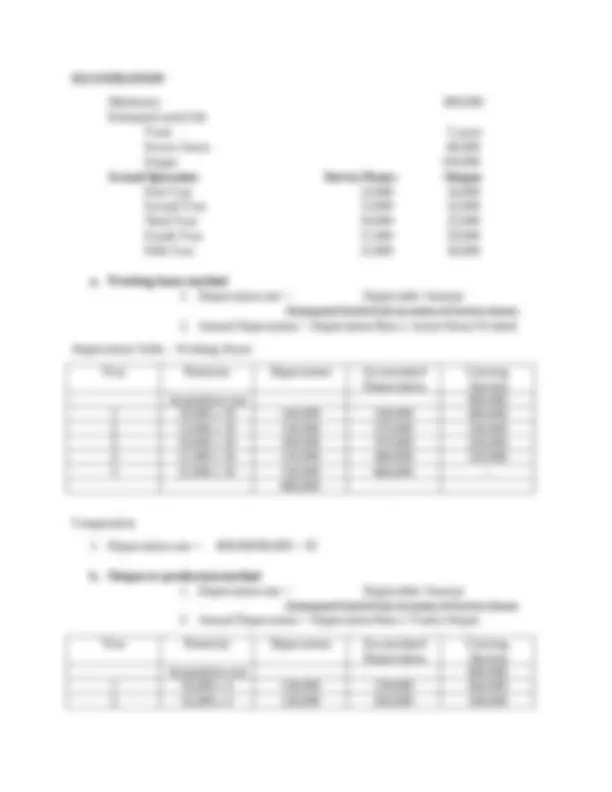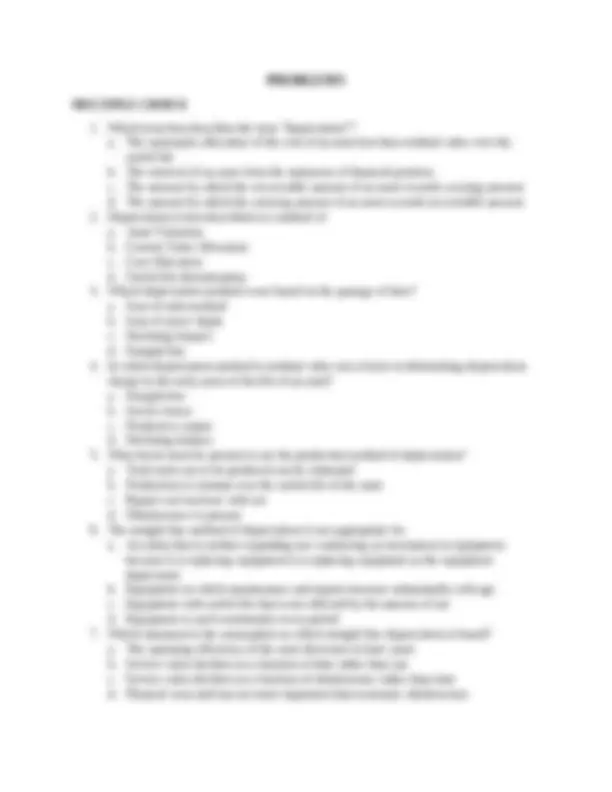





Study with the several resources on Docsity

Earn points by helping other students or get them with a premium plan


Prepare for your exams
Study with the several resources on Docsity

Earn points to download
Earn points by helping other students or get them with a premium plan
Community
Ask the community for help and clear up your study doubts
Discover the best universities in your country according to Docsity users
Free resources
Download our free guides on studying techniques, anxiety management strategies, and thesis advice from Docsity tutors
This is a lecture note regarding concept of Depreciation. This can be used as a reading and material in understanding Financial accounting and reporting.
Typology: Lecture notes
1 / 7

This page cannot be seen from the preview
Don't miss anything!




IAS 16.50 Indicates that the depreciable amount of an asset should be allocated on a systematic basis over its useful life. This description captures one of the key elements of depreciation concept: it is an allocation of the asset’s cost. Many people often associate the idea of depreciation with a decline in value of the asset. Although it is possible that the depreciation calculated approximates the loss in value of the asset as it is used, there is no guarantee that this will be true. It is important to appreciate that the purpose of accounting depreciation is to match the initial cost of the PPE asset to the periods that benefit from its use. Depreciation does not provide an estimate of the change in an asset’s fair value. Rather, it simply provides a way to allocate asset costs to the correct accounting periods. The description above also identifies three key concepts:
Technical or commercial obsolescence of the asset arising from changes or improvements in production or from a change in the market demand for the product or service output of the asset Legal or similar limits on the use of the asset, such as the expiry dates of related leases. METHODS OF CALCULATION In determining the depreciation amount of an asset, companies are given the freedom to choose the method used, as long as the method makes sense in relation to the consumption of future economic benefits realized by use of the asset. Aside from the methods that will be presented below, other techniques could be justified if they provide a more systematic and reasonable allocation of cost. Straight-Line Method This is the simplest and most commonly used depreciation method. This method simply allocates cost in equal proportions to the time periods of an asset’s useful life. The formula to determine the depreciation charge is as follows: Cost − Residual value Useful life = Depreciation charge ILLUSTRATION Consider an automated packaging machine purchased for ₱100,000 that is used in a factory. It is estimated that this machine will have a useful life of 5 years and will have a residual value of ₱10,000. The calculation of the annual depreciation charge is as follows: ₱100,000 − ₱10, 5 years =₱18, Variable charge or activity methods This type of calculations are usually relevant to those who are using machineries to produce the company’s products. The useful life is considered in terms of the output of the assets can produce or the number of its working hours. The use of this method is based on the following: a. Assets depreciate rapidly if they are used full time or overtime b. There is a direct relationship between utilization of assets and realization of revenue, because the more the asset is used, the greater revenue is expected.
3 25,000 x 4 100,000 364,000 236, 4 29,000 x 4 116,000 480,000 120, 5 30,000 x 4 120,000 600,000 - 600,
a. Prepare the journal entry to correct the prior years’ depreciation. b. Prepare the journal entry to record the 2019 depreciation. PROBLEM 3 Castro Ltd. purchased a used delivery van for ₱10,000 on June 23, 2017. The van is expected to last for three years and have a residual value of ₱1,000. The company’s year-end is December 31, and it follows the policy of charging depreciation in partial periods to the nearest whole month of use. Required: Calculate the annual depreciation charge and ending carrying value of the asset for each of the following fiscal years using the straight-line method: a. December 31, 2017 b. December 31, 2018 c. December 31, 2019 d. December 31, 2020